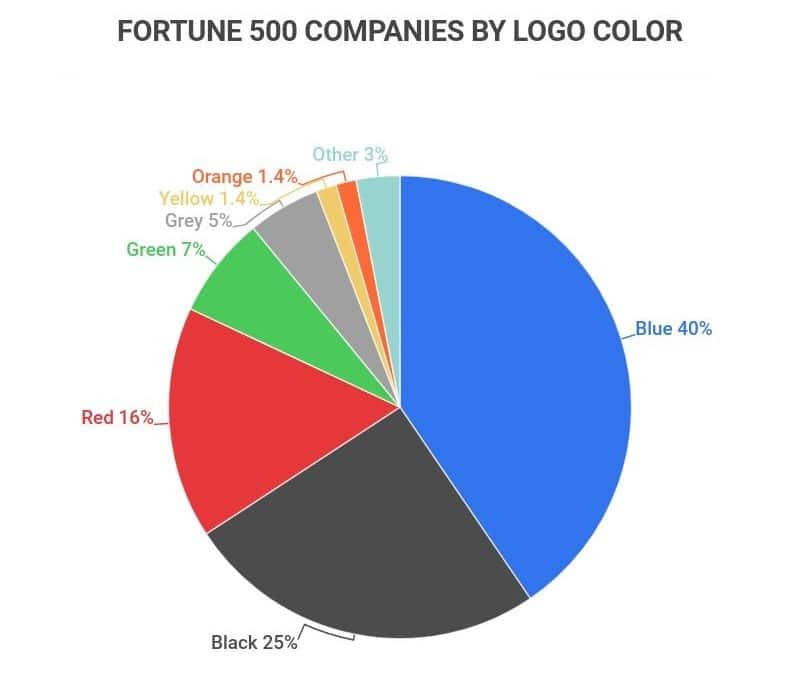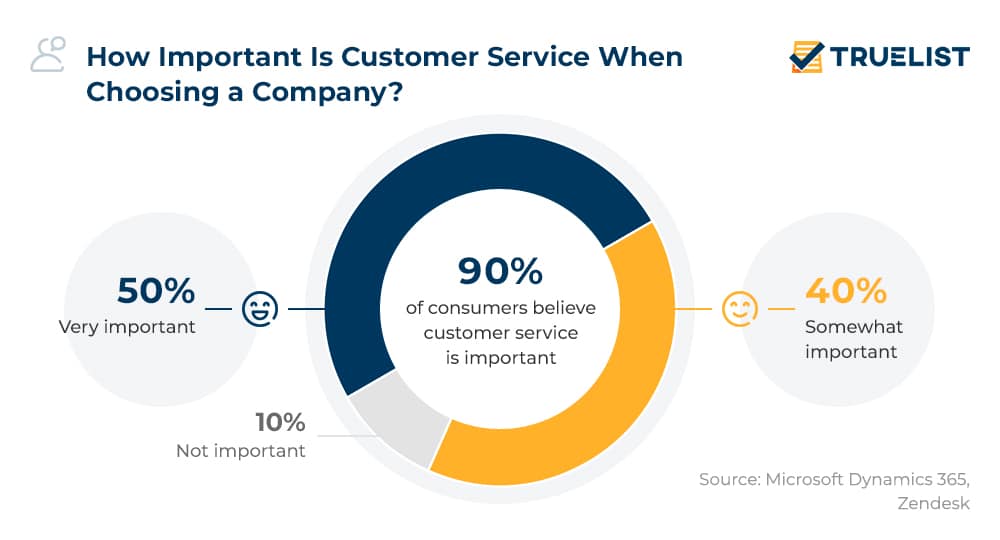Opening a brewery can be an exciting endeavor for beer lovers looking to turn their passion into a business. The U.S. beer market grows every year, expanding at a compound annual growth rate (CAGR) of 7.0% from 2022 to 2030. As consumer tastes continue shifting toward unique and local options, there is plenty of room for new craft breweries to stake their claim.

When getting started, it is important to understand the legal landscape around alcohol production, such as licensing and regulations that vary by state. Additionally, perfecting beer recipes takes experimentation – expect to invest significant time into the brewing process before opening doors to the public.
This guide will walk you through how to start a brewery. Topics include market research, registering an EIN, obtaining business insurance, forming a legal business entity, sourcing your equipment, and more.
1. Conduct Brewery Market Research
Market research is integral to forming a thorough brewery business plan. It provides valuable insight into other local brewer owners, trends in the brewery industry, your target market, and more.

Some details you’ll learn through brewing industry market research include:
- Rather than domestic brews, drinkers today favor quality, flavor, and variety.
- Small and independent breweries are filling this demand.
- Craft beer drinkers tend to support hyperlocal options, rewarding breweries that immerse themselves in their communities.
- Budding brewers should strongly consider including taprooms, which provide additional revenue streams through direct-to-consumer draught and food sales.
- Urban areas provide built-in demand, but rural taprooms can thrive by becoming community hangouts.
- Despite the crowded marketplace, the industry remains highly fragmented.
- Expect fierce local competition – winning over neighborhood beer fans is critical to taproom success.
- Standing out requires mastering brewing techniques, forging community connections, and articulating a unique identity through quality ingredients, specialty beer styles, or sustainability practices.
The upfront costs of launching your own brewery should not be underestimated. With equipment, real estate, supplies, licensing, branding, and more, be prepared to invest hundreds of thousands for a full-scale brewery with a taproom.
2. Analyze the Competition
For hopeful brewers, thoroughly analyzing local competition should be a critical step before opening. Due to the hyperlocal nature of the craft beer industry, the other breweries operating in your area will be your primary competitors for taproom sales and loyal neighborhood regulars.
Identify all brewery owners within a 15-mile radius. Make a list of the names and addresses of those in the craft beer scene. Conduct online research to gather intel. Check their websites and social media pages to understand their branding, beer offerings, price points, events, and promotions. Subscribe to their email newsletters.
Visit taproom locations in person. Observe foot traffic numbers during both peak and non-peak times, like weekend evenings versus Tuesday afternoons. Take notes on the tasting room ambiance, available seating, food offerings, staff friendliness, and more. If possible, chat with patrons and staff to hear first-hand opinions. Place anonymous take-out orders to critique service timeliness and accuracy.
Pay attention to the wider community engagement efforts as well. Local sponsorships, partnerships, fundraisers, and publicity indicate customer awareness and loyalty. Check craft beer publications and awards won to benchmark quality and prestige.
Compile all findings into profiles for each brewery – their specialties, differentiators, weaknesses, price points, community traction, and brand personalities. Look for potential gaps or consumer needs not being met. This analysis becomes your competitive blueprint, use it to position your brewery as a complement while avoiding direct copying.
3. Costs to Start a Brewery Business
Starting a brewery requires significant upfront capital and should not be underestimated. Personal and brewery expenses accumulated during startup and ongoing include brewery equipment, legal fees, administrative fees, and more. Let’s break down the costs of brewing beer here.
Start-up Costs
- This includes a federal Brewer’s Notice and state/county brewery licenses which could total $1,000-2,000 depending on location.
- Lawyer fees to ensure full legal compliance may require an additional $2,000.
- Zoning permits, trademarks, sales tax ID numbers, and a business operating license will likely cost another $1,000-1,500 combined.
- Whether you choose an existing warehouse/industrial building or retrofit a storefront, expect to pay at least $80-100 per sq ft for a 5,000 sq ft minimum to house brewing equipment and finished product storage.
- Any property will also need plumbing and electrical upgrades for large brewing systems, budget of $20,000-50,000 depending on current infrastructure.
- Parking availability is also a major factor. Mortgage down payments commonly start around $100,000.
- A 15-barrel brewhouse with fermentation tanks, glycol chilling, steam generation, grain handling, cleaning accessories, and all necessary piping and pumps will likely cost $250,000-500,000.
- Buying brand-new stainless steel equipment is ideal but expensive, sourcing good-conditioned systems can save substantially.
- You’ll also need packaging equipment, a canning line, a bottling line, or a washer filler will add $30,000-100,000+.
- At a minimum, plan to bring on a head brewer and taproom manager, likely costing $60,000-90,000/year combined.
- Insurance needs include commercial property coverage plus liability, allot at least $5,000/year.
- Budget $15,000-20,000 to effectively announce and promote your brewery’s debut.
The total costs to research, plan, lease/purchase property, obtain licenses/permits, buy equipment, hire staff, and open for business can easily exceed $750,000. Specific amounts vary widely based on location, capacity, amenities, and more but this capital outlay gives a realistic idea.
Ongoing Costs
Ongoing expenses persist once the doors open. Typical monthly costs will include:
- Rent/Mortgage Payments: $5,000
- Equipment Lease Payments: $5,000
- Ingredient Sourcing: $10,000 per batch
- Packaging Materials: $5,000
- Salaries: $25,000
- Utilities: $3,000
- Insurance: $400
- Waste Removal: $500 Marketing/Advertising: $2,000
- Annual taxes, license renewals, maintenance, expansions into new markets, branding refreshers, and distribution fees can cost $75,000 extra every year.
While daunting, a well-executed brewery in the right community can generate over $1 million in annual sales. Passion, quality brewing, business savvy, and upfront research are key to managing costs and cash flow while building a profitable hometown brand.
4. Form a Legal Business Entity
When establishing a legal business structure, brewery founders have four main options:
Sole Proprietorship
A sole proprietorship means the owner and business are legally the same. This offers no personal liability protection, the owner is personally responsible for all debts and legal actions against the brewery. Tax preparation is straightforward with pass-through income directly to the proprietor’s returns. However, accessing financing can be very difficult without shielding personal assets.
Partnership
Partnerships enable multiple owners to jointly operate and assume liability for a brewery. A formal partnership agreement details ownership percentages, responsibilities, decision processes, and more between partners. Income passes through to partners for tax purposes.
Corporation
A corporation establishes the brewery as its legal entity, shielding personal assets from any debts or lawsuits against the business itself. This makes financing easier through investments or loans. Profits face double taxation – both corporate and personal income tax for owners. Significant record-keeping and formalities also apply for corporations to maintain protected liability status.
Limited Liability Company (LLC)
For most brewers, forming a limited liability company (LLC) hits the best balance in terms of liability protection, tax implications, financing opportunities, and administrative requirements. LLC status shields personal assets from brewery debts or legal actions, minimizing founder risk. Pass-through taxation eliminates any double tax concerns.
5. Register Your Business For Taxes
An Employer Identification Number (EIN) serves as a unique tax ID number for business entities, similar to how Social Security Numbers identify individual taxpayers. Breweries legally structured as LLCs, partnerships, corporations, and even sole proprietors with employees must obtain their own EIN from the IRS for federal tax administration purposes.
Applying for an EIN is free and can be completed online via the IRS EIN Assistant. The entire process should take less than 15 minutes if you have all the required information handy.
Simply navigate to the EIN Assistant site linked above and begin answering prompts about your business structure, ownership details, activities, and location. For industry classification, select “Beverage and Tobacco Product Manufacturing”. Have your LLC or incorporation paperwork close by for reference.
After submitting, you will receive an EIN confirmation notice containing your new tax ID number. Print this for your records along with the complete application summary for future reference.
With your federal EIN established, contact your state revenue office to understand requirements around state tax IDs, seller’s permits, and sales tax collection. For example, in California:
- Apply for a CA Seller’s Permit to collect and pay sales tax
- Register with the CA Department of Tax and Fee Administration
- Pay annual minimum franchise tax for LLCs
These items help legally operate your brewery within state statutes as well. Fees vary by location but often total less than $100 when launching initially.
Properly structuring your brewery as an LLC and obtaining EIN plus state-level tax compliance paperwork lays the administrative foundation for smooth ongoing operations and expansion down the road. Revisit filings whenever significant changes like new locations, owners, or business activities occur.
6. Setup Your Accounting
Proper financial record keeping is crucial for breweries to track ingredient costs per batch, price products accurately, monitor profitability, stay tax compliant, and make sound growth decisions. While tedious paperwork may not be exciting, investing in accounting software and services provides major long-term value.
Accounting Software
For automated tracking of income, expenses, inventory, and more, use tools like QuickBooks. The connectivity to business bank/credit card statements will compile transaction data seamlessly so you always have current financial visibility without manual entry. Expect to budget $50-150/month for a robust plan.
Hire an Accountant
Hiring an accountant takes optimization even further through customized reporting, tax guidance, and auditing to catch errors. A qualified accountant can handle full bookkeeping, payments, payroll, quarterly tax payments, and filings for roughly $1,500-3,000/month. Engage an accountant minimally for annual filing preparation to maximize deductions and avoid IRS issues.
Open a Business Bank Account
Separating personal and business finances is also key. Keep expenses, income, and tax liabilities distinct through dedicated credit cards and bank accounts. Business accounts often have higher and adjustable credit limits since lending decisions emphasize company financials over personal scores. Have an Employer Identification Number (EIN) to apply using projected revenue estimates.
7. Obtain Licenses and Permits
Before brewing and serving even a single pint, extensive alcohol regulatory compliance is required at both federal and state/local levels. Find federal license information through the U.S. Small Business Administration. The SBA also offers a local search tool for state and city requirements.
Federally, acquiring a Brewer’s Notice from the TTB (Alcohol and Tobacco Tax and Trade Bureau) is the most essential. This license formally recognizes premises for producing malt beverages before operations commence. It registers key details like location, ownership, and intent for any interstate commerce, plus compliance with labeling/formula laws.
Additionally, the FDA requires a food facility registration for any site manufacturing, processing, packing, or storing food meant for consumption in the United States, including beer. This simple formality confirms awareness of and willingness to adhere to food safety regulations. Registration renewals are needed every two years.
Wastewater permits may also apply under the EPA’s National Pollutant Discharge Elimination System depending on quantity and disposal process for brewery discharge like used water from wort production, cleaning chemicals, or boiler purges. Proper handling prevents environmental contamination and public health risks in municipal systems.
State and local authorities govern further licensing needs:
A state alcohol manufacturing license gives site-specific authority for commercial beer production based on proposed barrelage output estimates and sales channels. Annual renewals apply, sometimes with scaled fees per volume growth.
Local building permits ensure construction meets codes and standards with proper zoning allowances if new structures are built or existing spaces are retrofitted for brewery operations.
Some states even require separate taproom licenses should direct to consumer premises draught sales be part of the business plan alongside packaging for distribution. Others bundle on-site serving authority within manufacturing licenses.
Lastly, don’t forget about final health and safety inspections by local officials before opening doors. This confirms sanitization procedures, chemical storage, serving protocols, and equipment specifications to protect public patrons from contamination or injury risks onsite.
While navigating what feels like an obstacle course of red tape, know that each license serves a purpose in maintaining integrity and order across the alcohol industry. Once in place with fees paid, they enable smooth sailing for small brewery businesses! Seek guidance from an attorney if questions arise regarding your specific jurisdiction.
8. Get Business Insurance
Operating a brewery comes with inherent risks that make insurance coverage essential. Whether property damage, inventory losses, customer injuries, or large-scale disasters, unforeseen events can quickly derail an uninsured small business. The right insurance mitigates financial devastation when the unexpected strikes.
For example, a small grease fire rapidly spreading could destroy an entire brewhouse. Or worse, a guest severely sickened by a contaminated batch prompting a lawsuit. Even mundane realities like a walk-in cooler malfunction ruining thousands of ingredients or kegs.
Without protections, these common issues force owners to self-fund from savings otherwise meant for growth. Some may necessitate taking out crushing loans. In worst cases, declaring bankruptcy is unable to rebuild both facilities and cash flow simultaneously.
Safeguard against this. Core brewery policies like General Liability, Commercial Property, Liquor Liability, Business Interruption, and Equipment Breakdown create an affordable safety net. Expect to invest $2,000-5,000 annually depending on claim history and policy customization.
Getting covered involves:
- Documenting your brewery details
- Requesting quotes from multiple business insurers
- Comparing coverage terms and pricing
- Purchasing a tailored policy bundle
While paying monthly premiums may seem annoying upfront, remember that insurance can make or break companies when disaster strikes. Protect investments and sleep soundly by safeguarding your brewery’s future!
9. Create an Office Space
While the brewhouse and taproom are central brewery locations, securing dedicated office space enables essential behind-the-scenes business operations – from branding and marketing to accounting and compliance. An office also projects legitimacy to investors or lenders through formal meeting spaces versus working from home.
Home Office
A home office can provide these functions early on due to low overhead. Expect to budget $100 to 250 for basic furnishings and supplies. However, conducting meetings feels less professional, and distractions from family members reduce productivity. Storage limitations may also arise for paperwork and marketing materials.
Coworking Office
For building business creditability through a more formal environment at affordable rates, coworking spaces like WeWork provide functional private offices or desks within shared sites. Complete move-in ready amenities like utilities, wifi, printing/copying, meeting rooms, kitchens, and front desk staff. Pricing is often flexible whether needing full-time or part-time access.
On-Site Office
A standalone retail office space allows maximum control in developing an environment tailored to the brand’s persona without strangers sharing the premises. Budget $15/sq ft minimum for lease terms around 3-5 years including insurance, utilities, and furnishings. With breweries, any square footage not being maximized for production capacity likely makes the higher investment unjustifiable.
10. Source Your Equipment
Launching a brewery hinges on securing specialized stainless steel equipment for handling end-to-end production – from boiling and fermenting to filtering, carbonating, and packaging finished beer. With a 15bbl startup brewhouse alone costing over $100k when buying brand new, exploring alternative acquisition strategies is wise.
Buy New
Purchasing new through vendors like ProBrewer offers the latest technologies and customization for scalability. Expect to pay premium rates but benefit from warranties plus avoiding surprises that used gear may bring. Leading equipment manufacturers also sell directly. Buy piece-by-piece over months or leverage equipment financing.
Buy Used
Used equipment via sites like BreweryAuctions and eBay provides major cost savings – around 50% less than new. Inspection for defects and cleaning/sanitization needs are musts before purchase. Factor in potential repair expenditures down the road.
Rent
For those wanting to test concepts before fully committing, renting can make sense in the short term. Resources like Mind2Machine‘s pilot systems allow firsthand workflow experience. Expect rates around $1000-$2000 monthly for limited capacity options. Taking over a turnkey brewery space may also include some equipment access as part of temporary arrangements.
Lease
Leasing brew systems through equipment finance companies brings reliability akin to buying new but with managed monthly payments over 3-7 years rather than 100% upfront capital expenditure. This preserves cash flow for other startup needs. Be sure to negotiate fair market value buyouts upon the lease ending.
11. Establish Your Brand Assets
Crafting a distinctive brand identity is pivotal for breweries to stand out from the crowd. Logos, websites, signage, and other branding elements present a consistent image and reputation that build awareness and loyalty among patrons. Investing in professional, cohesive assets lays recognizable foundations for growth.

Get a Business Phone Number
Start by establishing branded business phone services through providers like RingCentral. Toll-free numbers with custom greetings and extension routing exude credibility and seamless customer service from initial inbound calls. Expect to budget $30-60 monthly.
Design a Logo
A logo forms the cornerstone of most branding campaigns. Work with designers on marketplaces like Looka to develop icons, monogram lettermarks, or clever badges that encapsulate the brewery’s personality. Expect to invest $150-500+ for creation, revisions, and file access.
Print Business Cards
For in-person impressions, business cards enable easy info-sharing about the brewery during handshakes with patrons, vendors, and industry peers. Include essential contact details, social media handles, founding year, specialty brew types, or awards won. Leading online print shops like Vistaprint offer 500 basic cards for under $50.
Buy a Domain Name
An owned domain name gives the brewery true digital ownership for building current and future web presences as the hub for all online engagement. Register a .com matching the business name through registrars like Namecheap for under $20 annually.
Design a Website
From there, websites themselves can be self-built via DIY sites like Wix leveraging user-friendly templates and drag-drop interfaces. Expect $10-30 monthly for robust e-commerce and blog tools to manage content in-house long-term. For turnkey custom sites, web developers on marketplaces like Fiverr design and program from scratch based on brand needs for $500.
12. Join Associations and Groups
While passion for quality beer may inspire brewery dreams, surrounding yourself with fellow local brewing professionals and entrepreneurs breeds insight for actually excelling in your market. Industry groups and networking events enable valuable wisdom sharing plus visibility for new brands.
Local Associations
Local brewery associations like the NY State Brewers Association and California Craft Brewers Association provide both mentor community and pivotal exposure. Annual memberships average $100-500 including myriad benefits like legislative advocacy, licensing/permitting guidance, affiliated supply discounts, product promotion channels, and collaborative marketing campaigns.
Local Meetups
Don’t underestimate networking power at regional industry meetups and tradeshows. Sites like Meetup index frequent local events facilitating idea exchange between brewers, hop growers, distributors, and other ecosystem players. Conversations spark inspiration while relationships foster partnership opportunities as your brewery matures.
Facebook Groups
Facebook brewing groups also enable valuable national peer connections across the industry. Well-known communities like Start A Brewery and Home Brewing USA have thousands of engaged members. Join related groups to access crowdsourced wisdom on particular beer styles, ingredients, recipes, equipment questions, and more.
13. How to Market a Brewery Business
Effective marketing is indispensable for breweries hoping to carve out visibility amid fierce local competition. Promotions should aim both to attract new patrons plus incentivize existing fans to return frequently. Leveraging one’s community network alongside both digital and real-world campaigns enables well-rounded engagement.
Personal Networking
Tap into immediate connections first. Opening events should gather friends, family, colleagues, and acquaintances to experience the beer and space. Emphasize bringing along peers to set referral momentum quickly. Give sneak peeks before doors officially open to media contacts or local organizations relevant to the brand ethos (charities, sustainability groups, etc).
Digital Marketing
Amplify further through digital marketing channels:
- Google/Facebook Ads targeting area demographics with taproom Grand Opening or seasonal beer specials
- YouTube Tutorials on homebrew techniques or tasting profiles for signature recipes
- Blog Content highlighting local partnerships, awards won, or staff backgrounds for SEO boosts
- Google Business Profile management ensuring accurate Opening Hours, photos, and patron reviews
Traditional Marketing
Use some additional traditional mediums like:
- Direct Mailers in surrounding neighborhoods announcing Grand Opening or events
- Bar/Bottleshop Materials providing take-away brochures, coasters, stickers, etc
- Sponsored Local Radio Segments discussing seasonal releases, food pairings, or staff backgrounds
Remember that the most vital touchpoints are in person, especially early on. Invest in the atmosphere, service excellence, quality, and uniqueness to delight patrons at the opening. Digital and traditional channels simply enhance the core experience to drive interest. Focus efforts on neighborhoods immediately adjacent for the easiest wins.
14. Focus on the Customer
In an industry filled with ever-growing competition, breweries live and die by their taproom guest experiences. One bad customer service incident can quickly tarnish a reputation in the tight-knit craft beer community. Alternatively, memorably pleasant and engaging visits drive return patronage while fueling word-of-mouth referrals.

The intrinsic social nature of enjoying beers onsite means peers will hear both rave reviews and complaints after each visit. Providing prompt, friendly, and patient order taking plus accurately answering questions about unique beer profiles or ingredients leaves strong impressions. Making suggestions based on past selections and proactively checking on the table needs nurtures personal connections.
Even subtle efforts like ensuring bathrooms are exceptionally clean or offering booth-side growler fill-ups for mobility-challenged guests further goodwill. Following up on issues raised through email surveys or Yelp reviews also demonstrates care for feedback.
With countless brewery options near most neighborhoods now, the decision to return versus trying alternatives usually weighs heavily on taproom atmosphere perceptions. Investing in customer service training plus incentivizing staff to foster hospitality pays dividends when those moments of truth with patrons make or break loyalty.
Given the stakes around first-time and repeat visits, new brewers should underscore customer service excellence from day one. The community will quickly discern who treats them like valued beer fans rather than just transactions. Focus service efforts on making real friends rather than just making sales. Organic growth will follow.
